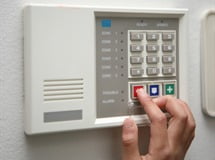The FCC’s
National Broadband Plan includes language that a convergence of IP-based
services including voice, data and video that use broadband transmission will
eventually predominate for signaling as well before any regulatory requirements
bring an end to POTS and the (public switched telephone networks (PSTN)
infrastructure.
“Some 70,000
[POTS] lines are cancelled every month,” Ed Bonifas, president of the Central
Station Alarm Association (CSAA), tells SSI. “The alarm industry dealing with
the demise of POTS has little to do with the regulation of the alarm industry.
Consumers are driving this.”
Carriers such as
AT&T and Verizon are also bailing out on POTS. For example, Verizon is
transitioning its FiOS bundled communications service to voice over Internet
protocol (VoIP).
Costs of
maintaining the copper lines are growing. Between 2003 and 2009, the average
cost per line increased almost 20 percent, according to the FCC. AT&T has
argued it can produce faster bandwidth in 5 to 7 years by eliminating switching
networks.
Where does that
leave the approximately 6 million alarm panels now screwed to walls? In the
April issue of SSI’s “Fire Side Chat Column,” Rick Alvarez, president of Nova
Security Systems Inc. in Fullerton, Calif., made the legacy equipment argument
that broadband doesn’t achieve the five-nines reliability of POTS.
Broadband carries
other advantages, especially during burglaries when a cut phone line can cause
a communication breakdown that may not be detected right away, says Mark
Fischer, vice president of New York Merchant Protective Co. Inc.
“I disagree with
the five-nines reliability of the POTS standard communications,” Fischer says.
“In an IP system, they tend to be more troublesome, but at least when there’s
an occurrence of a break-in you know about it immediately.”
VoIP services
also enable two-way voice communication for personal emergency response systems
(PERS).
To retain
existing legacy alarm panels, integrators can install onsite dialer capture
modules (such as Bosch’s C900 and AES IntelliNet’s radio-based IntelliTap) that
use a variety of protocols to move signal to a central station.
The Alarm
Industry Communications Committee (AICC), which includes representatives from
CSAA and the Electronic Security Association (ESA), is closely monitoring this
situation. Although the FCC is looking to phase out POTS by 2014, it appears
the alarm industry will be well on its way to embracing the new technology by
then.
“It’s a major
change to live without phone lines but the sky is not falling,” Bonifas adds.
“The sunset is not going to be a bad day for us. Something else that has voice
communication will be there to take its place.”








